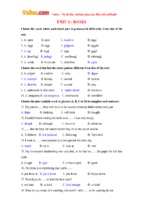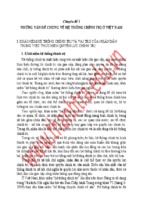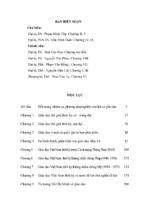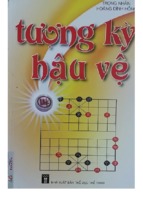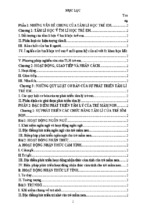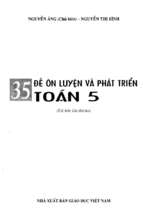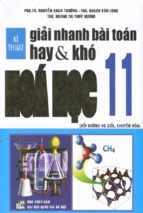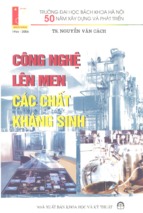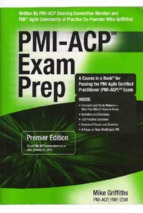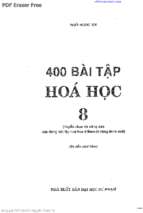iêu chuẩn EC 2 1992.1.1.2004
Th
eEu
r
o
p
e
a
nUn
i
o
n
≠ EDI
CTOFGOVERNMENT±
I
no
r
d
e
rt
op
r
o
mo
t
ep
u
b
l
i
ce
d
u
c
a
t
i
o
na
n
dp
u
b
l
i
cs
a
f
e
t
y
,e
q
u
a
lj
u
s
t
i
c
ef
o
ra
l
l
,
ab
e
t
t
e
ri
n
f
o
r
me
dc
i
t
i
z
e
n
r
y
,t
h
er
u
l
eo
fl
a
w,wo
r
l
dt
r
a
d
ea
n
dwo
r
l
dp
e
a
c
e
,
t
h
i
sl
e
g
a
ld
o
c
u
me
n
ti
sh
e
r
e
b
yma
d
ea
v
a
i
l
a
b
l
eo
nan
o
n
c
o
mme
r
c
i
a
lb
a
s
i
s
,a
si
t
i
st
h
er
i
g
h
to
fa
l
lh
u
ma
n
st
ok
n
o
wa
n
ds
p
e
a
kt
h
el
a
wst
h
a
tg
o
v
e
r
nt
h
e
m.
EN 1992-1-1 (2004) (English): Eurocode 2: Design of concrete
structures - Part 1-1: General rules and rules for buildings
[Authority: The European Union Per Regulation 305/2011,
Directive 98/34/EC, Directive 2004/18/EC]
EUROPEAN STANDARD
EN 1992-1-1
NORME EUROPEENNE
EUROpAISCHE NORM
December 2004
Incorporating corrigenda January 2008 and November 2010
Supersedes ENV 1992-1-1 :1991, ENV 1992-1-3:1994,
ENV 1992-1-4:1994, ENV 1992-1-5:1994, ENV 1992-1
6:1994, ENV 1992-3:1998
ICS 91.010.30; 91.080.40
English version
Eurocode 2: Design of concrete structures - Part 1-1 : General
rules and rules for buildings
Eurocode 2: Calcul des structures en beton - Partie 1-1 :
Regles generales et regles pour les batiments
Eurocode 2: Bemessung und konstruktion von Stahlbetonund Spannbetontragwerken - Teil 1-1: Allgemeine
Bemessungsregeln und Regeln fOr den Hochbau
This European Standard was approved by CEN on 16 April 2004.
CEN members are bound to comply with the CEN/CENELEC Internal Regulations which stipulate the conditions for giving this European
Standard the status of a national standard without any alteration. Up-to-date lists and bibliographical references concerning such national
standards may be obtained on application to the Central Secretariat or to any CEN member.
This European Standard exists in three official versions (English, French, German). A version in any other language made by translation
under the responsibility of a CEN member into its own language and notified to the Central Secretariat has the same status as the official
versions.
CEN members are the national standards bodies of Austria, Belgium, Cyprus, Czech Republic, Denmark, Estonia, Finland, France,
Germany, Greece, Hungary, Iceland, Ireland, Italy, Latvia, Lithuania, Luxembourg, Malta, Netherlands, Norway, Poland, Portugal, Slovakia,
Slovenia, Spain, Sweden, Switzerland and United Kingdom.
EUROPEA~ COMMITIEE FOR STANDARDIZATION
COM1TE EUROPEEN DE NORMALISATION
EUROpAISCHES KOMITEE FUR NORMUNG
Management Centre: Avenue Marnix 17, B-1000 Brussels
© 2004 CEN
All rights of exploitation in any form and by any means reserved
worldwide for CEN national Members.
Ref. No. EN 1992-1-1 :2004: E
BS EN 1992-1-1:2004
EN 1992-1-1:2004 (E)
Contents List
1.
1.1
1.2
1.3
1.4
1.5
1.6
2.
2.1
2.2
2.3
2.4
2.5
2.6
2.7
2
General
Scope
1.1.1 Scope of Eurocode 2
1.1.2 Scope of Part 1-1 of Eurocode 2
Normative references
1.2.1 General reference standards
1.2.2 Other reference standards
Assumptions
Distinction between principles and application rules
Definitions
1.5.1 General
1.5.2 Additional terms and definitions used in this Standard
1.5.2.1 Precast structures
1.5.2.2 Plain or lightly reinforced concrete members
1.5.2.3 Unbonded and external tendons
1.5.2.4 Prestress
Symbols
Basis of design
Requirements
2.1.1 Basic requirements
2.1.2 Reliability management
2.1.3 Design working life, durability and quality management
Principles of limit state design
Basic variables
2.3.1 Actions and environment influences
2.3.1.1 General
2.3.1.2 Thermal effects
2.3.1.3 Differential settlements/movements
2.3.1.4 Prestress
2.3.2 Material and product properties
2.3.2.1 General
2.3.2.2 Shrinkage and creep
2.3.3 Deformations of concrete
2.3.4 Geometric data
2.3.4.1 General
2.3.4.2 Supplementary requirements for cast in place piles
Verification by the partial factor method
2.4.1 General
2.4.2 Design values
2.4.2.1 Partial factor for shrinkage action
2.4.2.2 Partial factors for prestress
2.4.2.3 Partial factor for fatigue loads
2.4.2.4 Partial factors for materials
2.4.2.5 Partial factors for materials for foundations
2.4.3 Combinations of actions
2.4.4 Verification of static equilibrium - EQU
Design assisted by testing
Supplementary requirements for foundations
Requirements for fastenings
BS EN 1992-1-1:2004
EN 1992-1-1:2004 (E)
3.
3.1
3.2
3.3
3.4
4.
4.1
4.2
4.3
4.4
5.
5.1
Materials
Concrete
3.1.1 General
3.1.2 Strength
3.1.3 Elastic deformation
3.1.4 Creep and shrinkage
3.1.5 Stress-strain relation for non-linear structural analysis
3.1.6 Design cOITlpressive and tensile strengths
3.1.7 Stress-strain relations for the design of sections
3.1.8 Flexural tensile strength
3.1.9 Confined concrete
Reinforcing steel
3.2.1 General
3.2.2 Properties
3.2.3 Strength
3.2.4 Ductility characteristics
3.2.5 Welding
3.2.6 Fatigue
3.2.7 Design assumptions
Prestressing steel
3.3.1 General
3.3.2 Properties
3.3.3 Strength
3.3.4 Ductility characteristics
3.3.5 Fatigue
3.3.6 Design assumptions
3.3.7 Prestressing tendons in sheaths
Prestressing devices
3.4.1 Anchorages and couplers
3.4.1.1 General
3.4.1.2 Mechanical properties
3.4.1.2.1 Anchored tendons
3.4.1.2.2 Anchored devices and anchorage zones
3.4.2 External non-bonded tendons
3.4.2.1 General
3.4.2.2 Anchorages
Durability and cover to reinforcement
General
Environmental conditions
Requirements for durability
Methods of verifications
4.4.1 Concrete cover
4.4.1.1 General
4.4.1.2 Minimum cover, Cmin
4.4.1.3 Allowance in design for tolerance
Structural analysis
General
5.1.1 General requirements
5.1.2 Special requirements for foundations
5.1.3 Load cases and combinations
5.1.4 Second order effects
3
BS EN 1992-1-1:2004
EN 1992-1-1:2004 (E)
5.2
5.3
5.4
5.5
5.6
5.7
5.8
5.9
5.10
5.11
4
Geometric imperfections
Idealisation of the structure
5.3.1 Structural models for overall analysis
5.3.2 Geometric data
5.3.2.1 Effective width of flanges (all limit states)
5.3.2.2 Effective span of beams and slabs in buildings
Linear elastic analysis
Linear analysis with limited redistribution
Plastic analysis
5.6.1 General
5.6.2 Plastic analysis for beams, frames and slabs
5.6.3 Rotation capacity
5.6.4 Analysis with struts and tie models
Non-linear analysis
Analysis of second order effects with axial load
5.8.1 Definitions
5.8.2 General
5.8.3 Simplified criteria for second order effects
5.8.3.1 Slenderness Criterion for isolated members
5.8.3.2 Slenderness and effective length of isolated members
5.8.3.3 Global second order effects in buildings
5.8.4 Creep
5.8.5 Methods of analysis
5.8.6 General method
5.8.7 Method based on nominal stiffness
5.8.7.1 General
5.8.7.2 Nominal stiffness
5.8.7.3 Moment magnification factor
5.8.8 Method based on nominal curvature
5.8.8.1 General
5.8.8.2 Bending moments
5.8.8.3 Curvature
5.8.9 Biaxial bending
Lateral instability of slender beams
Prestressed members and structures
5.10.1 General
5.10.2 Prestressing force during tensioning
5.10.2.1 Maximum stressing force
5.10.2.2 Limitation of concrete stress
10.2.3 Measurements
5.10.3 Prestress force
5.1 0.4 Immediate losses of prestress for pre-tensioning
5.1 0.5 Immediate losses of prestress for post-tensioning
5.10.5.1 Losses due to the instantaneous deformation of concrete
5.10.5.2 Losses due to friction
5.10.5.3 Losses at anchorage
5.10.6 Time dependent losses of prestress for pre- and post-tensioning
5.10.7 Consideration of prestress in analysis
5.10.8 Effects of prestressing at ultimate limit state
5.10.9 Effects of prestressing at serviceability limit state and limit state of fatigue
Analysis for some particular structural members
BS EN 1992-1-1:2004
EN 1992-1-1:2004 (E)
6.
6.1
6.2
6.3
6.4
6.5
6.6
6.7
6.8
7.
7.1
7.2
7.3
7.4
8
8.1
8.2
8.3
8.4
Ultimate limit states (ULS)
Bending with or without axial force
Shear
6.2.1 General verification procedure
6.2.2 Members not requiring design shear reinforcement
6.2.3 Members requiring design shear reinforcement
6.2.4 Shear between web and flanges
6.2.5 Shear at the interface between concretes cast at different times
Torsion
6.3.1 General
6.3.2 Design procedure
6.3.3 Warping torsion
Punching
6.4.1 General
6.4.2 Load distribution and basic control perimeter
6.4.3 Punching shear calculation
6.4.4 Punching shear resistance of slabs and column bases without shear reinforcement
6.4.5 Punching shear resistance of slabs and column bases with shear reinforcement
Design with strut and tie models
6.5.1 General
6.5.2 Struts
6.5.3 Ties
6.5.4 Nodes
Anchorages and laps
Partially loaded areas
Fatigue
6.8.1 Verification conditions
6.8.2 Internal forces and stresses for fatigue verification
6.8.3 Conlbination of actions
6.8.4 Verification procedure for reinforcing and prestressing steel
6.8.5 Verification using damage equivalent stress range
6.8.6 Other verifications
6.8.7 Verification of concrete under compression or shear
Serviceability limit states (SLS)
General
Stress lirrlitation
Crack control
7.3.1 General considerations
7.3.2 Minimum reinforcement areas
7.3.3 Control of cracking without direct calculation
7.3.4 Calculation of crack widths
Deflection control
7.4.1 General considerations
7.4.2 Cases where calculations may be omitted
7.4.3 Checking deflections by calculation
Detailing of reinforcement and prestressing tendons General
General
Spacing of bars
Permissible mandrel diameters for bent bars
Anchorage of longitudinal reinforcement
8.4.1 General
5
BS EN 1992-1-1:2004
EN 1992-1-1:2004 (E)
8.5
8.6
8.7
8.8
8.9
8.10
9.
9.1
9.2
9.3
6
8.4.2 Ultimate bond stress
8.4.3 Basic anchorage length
8.4.4 Design anchorage length
Anchorage of links and shear reinforcenlent
Anchorage by welded bars
Laps and mechanical couplers
8.7.1 General
8.7.2 Laps
8.7.3 Lap length
8.7.4 Transverse reinforcement in the lap zone
8.7.4.1 Transverse reinforcement for bars in tension
8.7.4.2 Transverse reinforcement for bars permanently in cornpression
8.7.5 Laps for welded mesh fabrics made of ribbed wires
8.7.5.1 Laps of the main reinforcement
8.7.5.2 Laps of secondary or distribution reinforcement
Additional rules for large diameter bars
Bundled bars
8.9.1 General
8.9.2 Anchorage of bundles of bars
8.9.3 Lapping bundles of bars
Prestressing tendons
8.10.1 Arrangement of prestressing tendons and ducts
8.10.1.1 General
8.10.1.2 Pre-tensioned tendons
8.10.1.3 Post-tension ducts
8.10.2 Anchorage of pre-tensioned tendons
8.10.2.1 General
8.10.2.2 Transfer of prestress
8.10.2.3 Anchorage of tendons for the ultimate limit state
8.10.3 Anchorage zones of post-tensioned members
8.10.4 Anchorages and couplers for prestressing tendons
8.10.5 Deviators
Detailing of members and particular rules
General
Beams
9.2.1 Longitudinal reinforcement
9.2.1.1 Minimum and maximum reinforcement areas
9.2.1.2 Other detailing arrangements
9.2.1.3 Curtailment of the longitudinal tension reinforcement
9.2.1.4 Anchorage of bottom reinforcement at an end support
9.2.1.5 Anchorage of bottom reinforcement at intermediate supports
9.2.2 Shear reinforcement
9.2.3 Torsion reinforcement
9.2.4 Surface reinforcement
9.2.5 Indirect supports
Solid slabs
9.3.1 Flexural reinforcement
9.3.1.1 General
9.3.1.2 Reinforcement in slabs near supports
9.3.1.3 Corner reinforcement
9.3.1.4 Reinforcement at the free edges
BS EN 1992-1-1:2004
EN 1992-1-1:2004 (E)
9.4
9.5
9.6
9.7
9.8
9.9
9.10
10.
10.1
10.2
10.3
10.5
10.9
9.3.2 Shear reinforcement
Flat slabs
9.4.1 Slab at internal columns
9.4.2 Slab at edge columns
9.4.3 Punching shear reinforcement
Columns
9.5.1 General
9.5.2 Longitudinal reinforcement
9.5.3 Transverse reinforcement
Walls
9.6.1 General
9.6.2 Vertical reinforcement
9.6.3 Horizontal reinforcement
9.6.4 Transverse reinforcement
Deep beams
Foundations
9.8.1 Pile caps
9.8.2 Colurnn and wall footings
9.8.2.1 General
9.8.2.2 Anchorage of bars
9.8.3 Tie beams
9.8.4 Column footing on rock
9.8.5 Bored piles
Regions with discontinuity in geometry or action
Tying systems
9.10.1 General
9.10.2 Proportioning of ties
9.10.2.1 General
9.10.2.2 Peripheral ties
9.10.2.3 Internal ties
9.10.2.4 Horizontal ties to columns and/or walls
9.10.2.5 Vertical ties
9.10.3 Continuity and anchorage of ties
Additional rules for precast concrete elements and structures
General
10.1.1 Special terms used in this section
Basis of design, fundamental requirements
Materials
10.3.1 Concrete
10.3.1.1 Strength
10.3.1.2 Creep and shrinkage
10.3.1 Prestressing steel
10.3.2.1 Technological properties of prestressing steel
Structural analysis
10.5.1 General
10.5.2 Losses of prestress
Particular rules for design and detailing
10.9.1 Restraining moments in slabs
10.9.2 Wall to floor connections
10.9.3 Floor systems
10.9.4 Connections and supports for precast elements
7
BS EN 1992-1-1:2004
EN 1992-1-1:2004 (E)
11.
11.1
11.2
11.3
11.4
11.5
11.6
11.7
11.8
11.9
8
10.9.4.1 Materials
10.9.4.2 General rules for design and detailing of connections
10.9.4.3 Connections transmitting compressive forces
10.9.4.4 Connections transmitting shear forces
10.9.4.5 Connections transmitting bending moments or tensile forces
10.9.4.6 Half joints
10.9.4.7 Anchorage of reinforcement at supports
10.9.5 Bearings
10.9.5.1 General
10.9.5.2 Bearings for connected (non-isolated) members
10.9.5.3 Bearings for isolated members
10.9.6 Pocket foundations
10.9.6.1 General
10.9.6.2 Pockets with keyed surfaces
10.9.6.3 Pockets with smooth surfaces
10.9.7 Tying systems
Lightweight aggregated concrete structures
General
11 .1.1 Scope
11.1.2 Special symbols
Basis of design
Materials
11.3.1 Concrete
11.3.2 Elastic deformation
11.3.3 Creep and shrinkage
11.3.4 Stress-strain relations for structural analysis
11.3.5 Design compressive and tensile strengths
11.3.6 Stress-strain relations for the design of sections
11.3.7 Confined concrete
Durability and cover to reinforcement
11.4.1 Environmental conditions
11.4.2 Concrete cover and properties of concrete
Structural analysis
11.5.1 Rotational capacity
Ultimate limit states
11.6.1 Members not requiring design shear reinforcement
11.6.2 Members requiring design shear reinforcement
11.6.3 Torsion
11.6.3.1 Design procedure
11.6.4 Punching
11.6.4.1 Punching shear resistance of slabs and column bases without shear
reinforcement
11.6.4.2 Punching shear resistance of slabs and column bases with shear
reinforcement
11.6.5 Partially loaded areas
11.6.6 Fatigue
Serviceability limit states
Detailing of reinforcement - General
11.8.1 Permissible mandrel diameters for bent bars
11.8.2 Ultimate bond stress
Detailing of merTlbers and particular rules
BS EN 1992-1-1:2004
EN 1992-1-1:2004 (E)
11.10
11.12
12.
12.1
12.2
12.7
Additional rules for precast concrete elements and structures
Plain and lightly reinforced concrete structures
Plain and lightly reinforced concrete structures
General
Basis of design
12.2.1 Strength
Materials
12.3.1 Concrete: additional design assumptions
Structural analysis: ultimate Limit states
Ultimate limit states
12.6.1 Design resistance to bending and axial force
12.6.2 Local Failure
12.6.3 Shear
12.6.4 Torsion
12.6.5 Ultinlate limit states induced by structural deformation (buckling)
12.6.5.1 Slenderness of columns and walls
12.6.5.2 Simplified design method for walls and columns
Serviceability limit states
12.9
Detailing of members and particular rules
12.3
12.5
12.6
12.9.1 Structural members
12.9.2 Construction joints
12.9.3 Strip and pad footings
Annexes
A (I nformative)
B (I nformative)
C (Normative)
D (Informative)
E (Informative)
F (Informative)
G (Informative)
H (Informative)
I (I nformative)
J (lnfornlative)
Modification of partial factors for materials
Creep and shrinkage strain
Reinforcement properties
Detailed calculation nlethod for prestressing steel relaxation losses
Indicative Strength Classes for durability
Reinforcement expressions for in-plane stress conditions
Soil structu re interaction
Global second order effects in structures
Analysis of flat slabs and shear walls
Examples of regions with discontinuity in geometry or action
Foreword
This European Standard EN 1992, Eurocode 2: Design of concrete structures: General rules
and rules for buildings, has been prepared by Technical Conlrnittee CEN/TC250 « Structural
Eurocodes », the Secretariat of which is held by BSI. CEN/TC250 is responsible for all
Structural Eurocodes.
This European Standard shall be given the status of a National Standard, either by publication
of an identical text or by endorsement, at the latest by June 2005, and conflicting National
Standards shall be withdrawn at latest by March 2010.
This Eurocode supersedes ENV 1992-1-1,1992-1-3,1992-1-4,1992-1-5,1992-1-6 and 1992-3.
According to the CEN-CENELEC Internal Regulations, the National Standard Organisations of
the following countries are bound to implement these European Standard: Austria, Belgium,
Cyprus, Czech Republic, Denmark, Estonia, Finland, France, Germany, Greece, Hungary,
9
BS EN 1992-1-1:2004
EN 1992-1-1:2004 (E)
Iceland, Ireland, Italy, Latvia, Lithuania, Luxembourg, Malta, Netherlands, Norway, Poland,
Portugal, Slovakia, Slovenia, Spain, Sweden, Switzerland and United Kingdom.
Background to the Eurocode programme
In 1975, the Comnlission of the European Community decided on an action programme in the
field of construction, based on article 95 of the Treaty. The objective of the programme was the
elimination of technical obstacles to trade and the harmonisation of technical specifications.
Within this action programme, the Commission took the initiative to establish a set of
harmonised technical rules for the design of construction works which, in a first stage, would
serve as an alternative to the national rules in force in the Member States and, ultimately, would
replace them.
For fifteen years, the Commission, with the help of a Steering Comnlittee with Representatives
of Member States, conducted the development of the Eurocodes programme, which led to the
first generation of European codes in the 1980s.
In 1989, the Commission and the Member States of the EU and EFTA decided, on the basis of
1
an agreement between the Commission and CEN, to transfer the preparation and the
publication of the Eurocodes to CEN through a series of Mandates, in order to provide them
with a future status of European Standard (EN). This links de facto the Eurocodes with the
provisions of all the Council's Directives and/or Commission's Decisions dealing with European
standards (e.g. the Council Directive 89/106/EEC on construction products - CPD - and Council
Directives 93/37/EEC, 92/50/EEC and 89/440/EEC on public works and services and equivalent
EFTA Directives initiated in pursuit of setting up the internal market).
The Structural Eurocode programme comprises the following standards generally consisting of
a number of Parts:
EN 1990
Eurocode 0:
Basis of Structural Design
EN 1991
Eurocode 1:
Actions on structures
EN 1992
Eurocode 2:
Design of concrete structures
EN 1993
Eurocode 3:
Design of steel structures
EN 1994
Eurocode 4:
Design of composite steel and concrete structures
EN 1995
Eurocode 5:
Design of timber structures
EN 1996
Eurocode 6:
Design of masonry structures
EN 1997
Eurocode 7:
Geotechnical design
EN 1998
Eurocode 8:
Design of structures for earthquake resistance
EN 1999
Eurocode 9:
Design of aluminium structures
Eurocode standards recognise the responsibility of regulatory authorities in each Member State
and have safeguarded their right to determine values related to regulatory safety matters at
national level where these continue to vary from State to State.
Status and field of application of eurocodes
The Member States of the EU and EFTA recognise that Eurocodes serve as reference
documents for the following purposes:
as a means to prove compliance of building and civil engineering works with the essential
Agreement between the Commission of the European Communities and the European Committee for Standardisation (CEN) concerning the work
on EUROCODES for the design of building and civil engineering works (BC/CEN/03/89).
10
BS EN 1992-1-1:2004
EN 1992-1-1:2004 (E)
requirements of Council Directive 89/106/EEC, particularly Essential Requirement N°1 Mechanical resistance and stability - and Essential Requirement N°2 - Safety in case of fire;
as a basis for specifying contracts for construction works and related engineering services;
as a framework for drawing up harmonised technical specifications for construction products
(ENs and ETAs)
The Eurocodes, as far as they concern the construction works themselves, have a direct
relationship with the Interpretative Documents 2 referred to in Article 12 of the CPO, although
they are of a different nature from harmonised product standards 3 . Therefore, technical aspects
arising from the Eurocodes work need to be adequately considered by CEN Technical
Committees and/or EOTA Working Groups working on product standards with a view to
achieving full compatibility of these technical specifications with the Eurocodes.
The Eurocode standards provide common structural design rules for everyday use for the
design of whole structures and conlponent products of both a traditional and an innovative
nature. Unusual forms of construction or design conditions are not specifically covered and
additional expert consideration will be required by the designer in such cases.
National Standards implementing Eurocodes
The National Standards implementing Eurocodes will comprise the full text of the Eurocode
(including any annexes), as published by CEN, which may be preceded by a National title page
and National foreword, and may be followed by a National annex.
The National annex may only contain information on those parameters which are left open in
the Eurocode for national choice, known as Nationally Determined Parameters, to be used for
the design of buildings and civil engineering works to be constructed in the country concerned,
i.e. :
values and/or classes where alternatives are given in the Eurocode,
values to be used where a symbol only is given in the Eurocode,
country specific data (geographical, climatic, etc.), e.g. snow map,
the procedure to be used where alternative procedures are given in the Eurocode.
It may contain
decisions on the application of informative annexes,
- references to non-contradictory complementary information to assist the user to apply the
Eurocode.
Links between Eurocodes and harmonised technical specifications (ENs and ETAs) for
products
There is a need for consistency between the harmonised technical specifications for
2
3
According to Art. 3.3 of the CPO, the essential requirements (ERs) shall be given concrete form in interpretative documents for the creation of the
necessary links between the essential requirements and the mandates for harmonised ENs and ETAGs/ETAs.
According to Art. 12 of the CPD the interpretative documents shall:
a) give concrete form to the essential requirements by harmonising the terminology and the technical bases and indicating classes or levels for
each requirement where necessary ;
b)
indicate methods of correlating these classes or levels of requirement with the technical specifications, e.g. methods of calculation and of
proof, technical rules for project design, etc. ;
c) serve as a reference for the establishment of harmonised standards and guidelines for European technical approvals.
The Eurocodes, de facto, playa similar role in the field of the ER 1 and a part of ER 2.
11
BS EN 1992-1-1:2004
EN 1992-1-1:2004 (E)
construction products and the technical rules for works4. Furthermore, all the information
accompanying the CE Marking of the construction products which refer to Eurocodes should
clearly mention which Nationally Determined Parameters have been taken into account.
Additional information specific to EN 1992-1-1
EN 1992-1-1 describes the principles and requirements for safety, serviceability and durability
of concrete structures, together with specific provisions for buildings. It is based on the limit
state concept used in conjunction with a partial factor method.
For the design of new structures, EN 1992-1-1 is intended to be used, for direct application,
together with other parts of EN 1992, Eurocodes EN 1990,1991, 1997 and 1998.
EN 1992-1-1 also serves as a reference document for other CEN TCs concerning structural
matters.
EN 1992-1-1 is intended for use by:
committees drafting other standards for structural design and related product, testing and
execution standards;
- clients (e.g. for the formulation of their specific requirements on reliability levels and durability);
designers and constructors;
- relevant authorities.
Numerical values for partial factors and other reliability parameters are recommended as basic
values that provide an acceptable level of reliability. They have been selected assuming that an
appropriate level of workmanship and of quality management applies. When EN 1992-1-1 is
used as a base document by other CENITCs the same values need to be taken.
National annex for EN 1992-1-1
This standard gives values with notes indicating where national choices may have to be made.
Therefore the National Standard implementing EN 1992-1-1 should have a National annex
containing all Nationally Determined Parameters to be used for the design of buildings and civil
engineering works to be constructed in the relevant country.
National choice is allowed in EN 1992-1-1 through the following clauses:
4
see Art.3.3 and Art.12 of the CPD, as well as clauses 4.2, 4.3.1,4.3.2 and 5.2 of ID 1.
12
BS EN 1992-1-1:2004
EN 1992-1-1:2004 (E)
2.3.3 (3)
2.4.2.1 (1)
2.4.2.2 (1)
2.4.2.2 (2)
2.4.2.2 (3)
2.4.2.3 (1)
2.4.2.4 (1)
2.4.2.4 (2)
2.4.2.5 (2)
3.1.2 (2)P
3.1.2(4)
3.1.6 (1)P
3.1.6 (2)P
3.2.2 (3)P
3.2.7 (2)
3.3.4 (5)
3.3.6 (7)
4.4.1.2 (3)
4.4.1.2 (5)
4.4.1.2 (6)
4.4.1.2 (7)
4.4.1.2 (8)
4.4.1.2 (13)
4.4.1.3 (1)P
4.4.1.3 (3)
4.4.1.3 (4)
5.1.3(1)P
5.2 (5)
5.5 (4)
5.6.3 (4)
5.8.3.1 (1)
5.8.3.3 (1)
5.8.3.3 (2)
5.8.5 (1)
5.8.6 (3)
5.10.1 (6)
5.10.2.1 (1)P
5.10.2.1 (2)
5.10.2.2 (4)
5.10.2.2 (5)
5.10.3 (2)
5.10.8 (2)
5.10.8 (3)
5.10.9 (1)P
6.2.2 (1)
6.2.2 (6)
6.2.3 (2)
6.2.3 (3)
6.2.4 (4)
6.2.4 (6)
6.4.3 (6)
6.4.4 (1)
6.4.5 (3)
6.4.5 (4)
6.5.2 (2)
6.5.4 (4)
6.5.4 (6)
6.8.4 (1)
6.8.4 (5)
6.8.6 (1)
~ 6.8.6 (3) @il
6.8.7(1)
7.2 (2)
7.2 (3)
7.2 (5)
7.3.1 (5)
7.3.2 (4)
7.3.4 (3)
7.4.2 (2)
8.2 (2)
8.3 (2)
8.6 (2)
8.8 (1)
9.2.1.1 (1)
9.2.1.1 (3)
9.2.1.2 (1)
9.2.1.4 (1)
9.2.2 (4)
9.2.2 (5)
9.2.2 (6)
9.2.2 (7)
9.2.2 (8)
9.3.1.1 (3)
9.5.2 (1)
9.5.2 (2)
9.5.2 (3)
9.5.3 (3)
9.6.2 (1)
9.6.3 (1)
9.7 (1)
9.8.1 (3)
9.8.2.1 (1)
9.8.3 (1)
9.8.3 (2)
9.8.4 (1)
9.8.5 (3)
9.10.2.2 (2)
9.10.2.3 (3)
9.10.2.3 (4)
9.10.2.4 (2)
11.3.5(1)P
11.3.5 (2)P
11.3.7(1)
11.6.1 (1)
11.6.1 (2)
11.6.2 (1)
11.6.4.1 (1)
12.3.1 (1)
12.6.3 (2)
A.2.1 (1)
A.2.1 (2)
A.2.2 (1)
A.2.2 (2)
A.2.3 (1)
C.1 (1)
C.1 (3)
1 (2)
J.1 (2) @il
J.2.2 (2)
J.3 (2)
J.3 (3)
13
BS EN 1992-1-1:2004
EN 1992-1-1:2004 (E)
SECTION 1 GENERAL
1.1
Scope
1.1.1 Scope of Eurocode 2
(1)P Eurocode 2 applies to the design of buildings and civil engineering works in plain,
reinforced and prestressed concrete. It complies with the principles and requirements for the
safety and serviceability of structures, the basis of their design and verification that are given in
EN 1990: Basis of structural design.
(2)P Eurocode 2 is only concerned with the requirements for resistance, serviceability,
durability and fire resistance of concrete structures. Other requirements, e.g. concerning
thermal or sound insulation, are not considered.
(3)P Eurocode 2 is intended to be used in conjunction with:
EN 1990:
EN 1991:
hEN's:
ENV 13670:
EN 1997:
EN 1998:
Basis of structural design
Actions on structu res
Construction products relevant for concrete structures
Execution of concrete structu res
Geotechnical design
Design of structures for earthquake resistance, when concrete structures are built in
seismic regions.
(4)P Eurocode 2 is subdivided into the following parts:
Part
Part
Part
Part
1.1:
1.2:
2:
3:
General rules and rules for buildings
Structural fire design
Reinforced and prestressed concrete bridges
Liquid retaining and containing structures
1.1.2 Scope of Part 1-1 of Eurocode 2
(1)P Part 1-1 of Eurocode 2 gives a general basis for the design of structures in plain,
reinforced and prestressed concrete made with normal and light weight aggregates together
with specific rules for buildings.
(2)P The following subjects are dealt with in Part 1-1.
Section
Section
Section
Section
Section
Section
Section
Section
Section
14
1:
2:
3:
4:
5:
6:
7:
8:
9:
General
Basis of design
Materials
Durability and cover to reinforcement
Structural analysis
Ultimate limit states
Serviceability limit states
Detailing of reinforcement and prestressing tendons - General
Detailing of members and particular rules
BS EN 1992-1-1:2004
EN 1992-1-1:2004 (E)
Section 10:
Section 11:
Section 12:
Additional rules for precast concrete elements and structures
Lightweight aggregate concrete structures
Plain and lightly reinforced concrete structures
(3)P Sections 1 and 2 provide additional clauses to those given in EN 1990 "Basis of structural
design".
(4)P This Part 1-1 does not cover:
- the use of plain reinforcement
resistance to fire;
- particular aspects of special types of building (such as tall buildings);
- particular aspects of special types of civil engineering works (such as viaducts, bridges,
dams, pressure vessels, offshore platforms or liquid-retaining structures);
no-fines concrete and aerated concrete cOrYlponents, and those made with heavy
aggregate or containing structural steel sections (see Eurocode 4 for composite steelconcrete structures).
1.2
Normative'references
(1)P The following normative docunlents contain provisions which, through references in this
text, constitutive provisions of this European standard. For dated references, subsequent
amendments to or revisions of any of these publications do not apply. However, parties to
agreements based on this European standard are encouraged to investigate the possibility of
applying the most recent editions of the normative documents indicated below. For undated
references the latest edition of the normative document referred to applies.
1.2.1 General reference standards
EN 1990:
EN 1991-1-5:
EN 1991-1-6:
Basis of structural design
Actions on structures: Thermal actions
Actions on structures: Actions during execution
1.2.2 Other reference standards
EN1997:
EN 197-1:
Geotechnical design
Cement: Composition, specification and conforrYlity criteria for common
cements
EN 206-1:
Concrete: Specification, performance, production and conforn~lity
EN 12390:
Testing hardened concrete
EN 10080:
Steel for the reinforcement of concrete
EN 10138:
Prestressing steels
lEi) EN ISO 17660 (all parts):
Welding Welding of reinforcing steel @iI
ENV 13670:
Execution of concrete structures
EN 13791:
Testing concrete
EN ISO 15630
Steel for the reinforcement and prestressing of concrete: Test methods
1.3
Assumptions
(1)P In addition to the general assumptions of EN 1990 the following assumptions apply:
- Structures are designed by appropriately qualified and experienced personnel.
15
BS EN 1992-1-1:2004
EN 1992-1-1:2004 (E)
- Adequate supervision and quality control is provided in factories, in plants, and on site.
- Construction is carried out by personnel having the appropriate skill and experience.
- The construction materials and products are used as specified in this Eurocode or in the
relevant material or product specifications.
- The structure will be adequately maintained.
- The structure will be used in accordance with the design brief.
The requirements for execution and workmanship given in ENV 13670 are complied with.
1.4
Distinction between principles and application rules
(1)P The rules given in EN 1990 apply.
1.5
Definitions
1.5.1 General
(1)P The terms and definitions given in EN 1990 apply.
1.5.2 Additional terms and definitions used in this Standard
1.5.2.1 Precast structures. Precast structures are characterised by structural elements
manufactured elsewhere than in the final position in the structure. In the structure,
elements are connected to ensure the required structural integrity.
1.5.2.2 Plain or lightly reinforced concrete members. Structural concrete members having
no reinforcement (plain concrete) or less reinforcement than the minimum amounts
defined in Section 9.
1.5.2.3 Unbonded and external tendons. Unbonded tendons for post-tensioned members
having ducts which are permanently ungrouted, and tendons external to the concrete
cross-section (which may be encased in concrete after stressing, or have a protective
membrane).
1.5.2.4 Prestress. The process of prestressing consists in applying forces to the concrete
structure by stressing tendons relative to the concrete member. "Prestress" is used
globally to name all the permanent effects of the prestressing process, which comprise
internal forces in the sections and deformations of the structure. Other means of
prestressing are not considered in this standard.
1.6
Symbols
For the purposes of this standard, the following symbols apply.
Note: The notation used is based on ISO 3898:1987
Latin upper case letters
A
A
Ac
Ap
16
Accidental action
Cross sectional area
Cross sectional area of concrete
Area of a prestressing tendon or tendons
BS EN 1992-1-1:2004
EN 1992-1-1:2004 (E)
As
Cross sectional area of reinforcement
As,min mininlunl cross sectional area of reinforcement
Asw Cross sectional area of shear reinforcement
o
Diameter of mandrel
OEd
Fatigue damage factor
E
Effect of action
Ec, Ec(28) Tangent modulus of elasticity of normal weight concrete at a stress of Oc = 0
and at 28 days
Ec,eff Effective modulus of elasticity of concrete
Ecd
Design value of modulus of elasticity of concrete
Ecm
Secant modulus of elasticity of concrete
Ec(t) Tangent modulus of elasticity of nornlal weight concrete at a stress of Oc = 0 and
at time t
Ep
Design value of modulus of elasticity of prestressing steel
Es
Design value of modulus of elasticity of reinforcing steel
EI
Bending stiffness
EQU Static equilibrium
FAction
Fd
Design value of an action
Fk
Characteristic value of an action
Gk
Characteristic permanent action
1
Second monlent of area of concrete section
L
Length
M
Bending moment
M Ed
Design value of the applied internal bending moment
N
Axial force
NEd
Design value of the applied axial force (tension or compression)
P
Prestressing force
Po
Initial force at the active end of the tendon immediately after stressing
Ok
Characteristic variable action
Ofat
Characteristic fatigue load
R
Resistance
S
Internal forces and moments
S
First moment of area
SLS Serviceability limit state
T
Torsional moment
TEd
Design value of the applied torsional moment
ULS Ultimate limit state
V
Shear force
VEd
Design value of the applied shear force
Latin lower case letters
a
a
Lla
b
bw
d
d
Distance
Geometrical data
Deviation for geometrical data
Overall width of a cross-section, or actual flange width in a T or L beam
Width of the web on T, I or L beams
Diameter; Depth
Effective depth of a cross-section
17
BS EN 1992-1-1 :2004
EN 1992-1-1:2004 (E)
Largest nominal maximum aggregate size
Eccentricity
fe
Com pressive strength of concrete
fcd
Design value of concrete compressive strength
fek
Characteristic compressive cylinder strength of concrete at 28 days
fern
Mean value of concrete cylinder cornpressive strength
fetk
Characteristic axial tensile strength of concrete
fetm
Mean value of axial tensile strength of concrete
fp
Tensile strength of prestressing steel
fPk
Characteristic tensile strength of prestressing steel
fpO,1
0,1 0/ 0 proof-stress of prestressing steel
fpO,1k
Characteristic 0,1 % proof-stress of prestressing steel
fO,2k
Characteristic 0,2% proof-stress of reinforcement
ft
Tensile strength of reinforcement
ftk
Characteristic tensile strength of reinforcement
fy
Yield strength of reinforcement
fyd
Design yield strength of reinforcement
fYk
Characteristic yield strength of reinforcement
fywd
Design yield of shear reinforcement
h
Height
h
Overall depth of a cross-section
i
Radius of gyration
k
Coefficient; Factor
I
(or lor L) Length; Span
m
Mass
r
Radius
1/r
Curvature at a particular section
t
Thickness
t
Time being considered
to
The age of concrete at the time of loading
u
Perimeter of concrete cross-section, having area Ac
u, v, w Components of the displacement of a point
x
Neutral axis depth
x,Y,z Coordinates
z
Lever arm of internal forces
dg
e
Greek lower case letters
a
f3
Y
YA
YC,fat
YG
)1v1
18
Angle; ratio
Angle; ratio; coefficient
Partial factor
Partial factor for accidental actions A
Partial factor for concrete
Partial factor for actions, F
Partial factor for fatigue actions
Partial factor for fatigue of concrete
Partial factor for permanent actions, G
Partial factor for a material property, taking account of uncertainties in the material
property itself, in geometric deviation and in the design model used
- Xem thêm -



